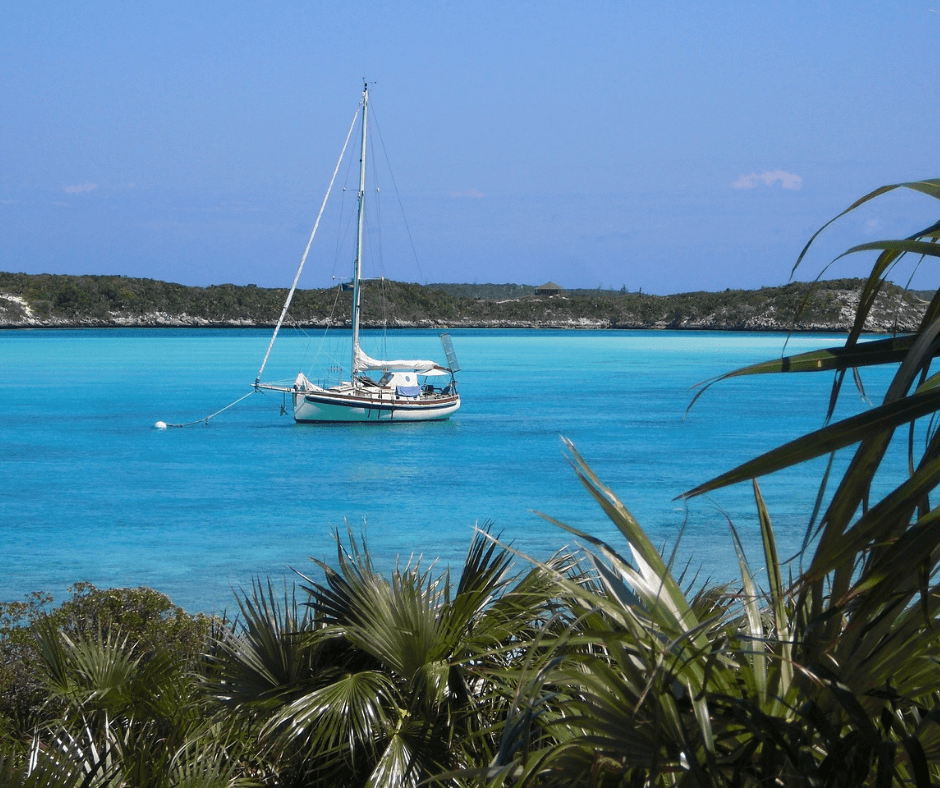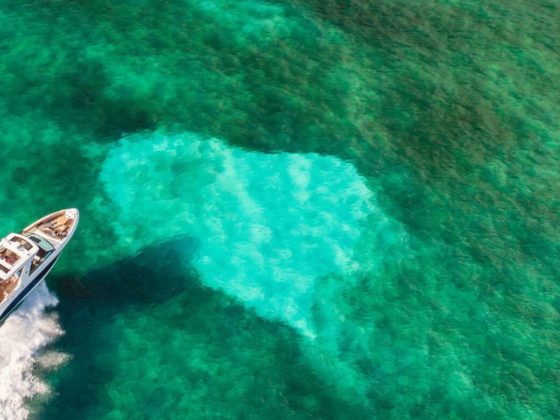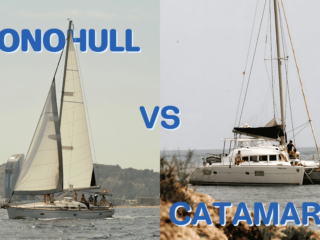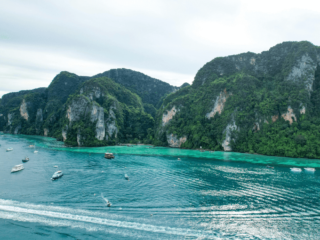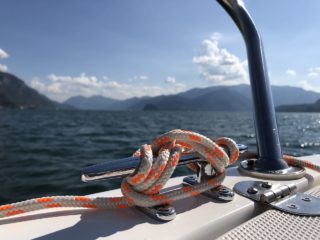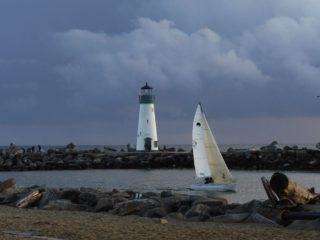With more than 700 islands scattered across crystal-clear shallows, the Bahamas is one of the world’s classic sailing grounds. Warm trade winds, year-round sunshine and short hops between anchorages make it ideal whether you’re a first-time sailor or an experienced skipper chasing winter sun. But “when should I go?” is the question everyone asks. Understanding the seasons, the trade winds and the hurricane window will help you pick the best time to sail to the Bahamas for your style of trip and your budget.
Weather and climate in the Bahamas
The Bahamas has a subtropical to tropical climate with warm temperatures all year. Air temperatures typically range from about 21–27°C (70–81°F) in winter and 25–32°C (77–90°F) in summer. The sea stays invitingly warm, rarely dropping below the mid-20s°C (mid-70s°F).
Rather than four sharply defined seasons, you’ll mostly hear locals talk about the dry season (roughly November to April) and the wet season (May to October). The dry months bring lower humidity, cooler evenings and more stable trade winds. This is perfect for long days under sail.
The wet months are warmer and more humid, with short but intense showers and the possibility of tropical storms. Official hurricane season runs from June to November, peaking between August and October, so if you sail then you’ll want flexible plans, good insurance and a close eye on forecasts.
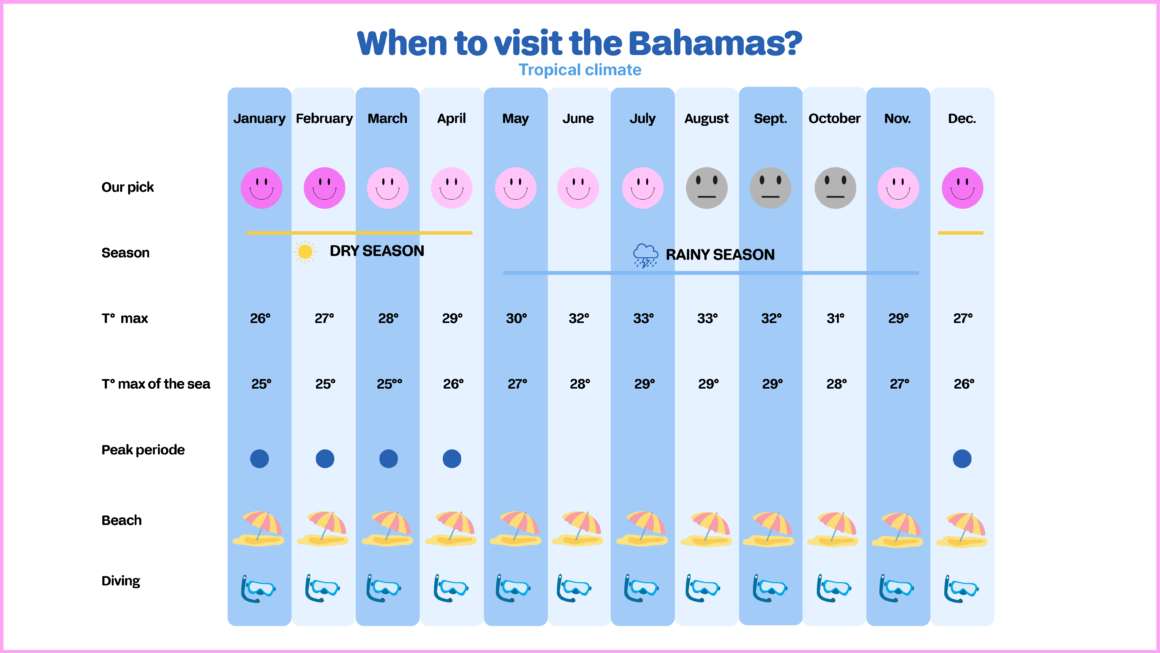
Winter (December to February): Peak sailing season
Winter is widely considered the best time to sail to the Bahamas. From December to February, the islands enjoy plenty of sunshine, pleasant daytime temperatures in the mid-20s°C (mid-70s to low-80s°F), and comfortable humidity levels. Steady trade winds of around 10–20 knots are common, creating ideal conditions for relaxed passages and easy anchoring. Visibility for snorkeling and diving is excellent at this time of year, and the water is still warm enough for long swims.
It’s also the liveliest period socially, with regattas, sailing events and festivals across the islands. The downside? This is high season: marina fees and charter prices are at their highest, popular anchorages fill up quickly and you’ll want to book well in advance. If you’re dreaming of Christmas or New Year on a yacht in the Exumas or Abacos, winter is the perfect window! Just expect to share the anchorages with plenty of other boats.
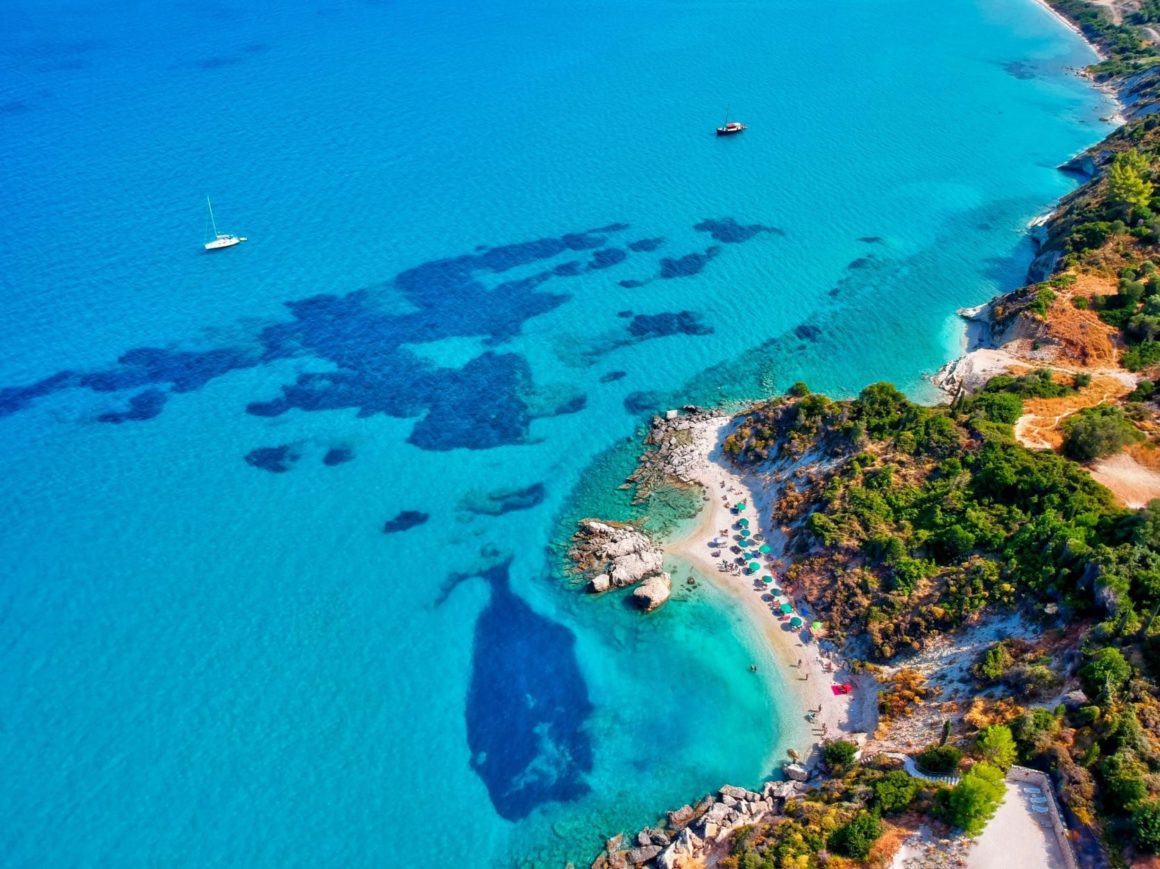
Spring (March to May): Great conditions with fewer crowds
Spring is a sweet spot for many sailors. In March and April you still benefit from the reliable winter trade winds and relatively dry weather, but crowds begin to thin after Easter and prices can start to ease off slightly. Air temperatures climb a little, typically hovering around 24–29°C (mid-70s to mid-80s°F), The sea is wonderfully warm for snorkeling the reefs or drifting over sandbars in the Exumas. By May, you’re edging into the start of the wet season, so you can expect more humidity and occasional showers, especially in the afternoons.
On the plus side, anchorages are quieter, and many sailors find the slightly lighter winds and glassy anchorages ideal for paddleboarding, kayaking and relaxed coastal hops. If you want good weather, decent value and fewer boats around you, late spring can be a brilliant time to sail to the Bahamas.
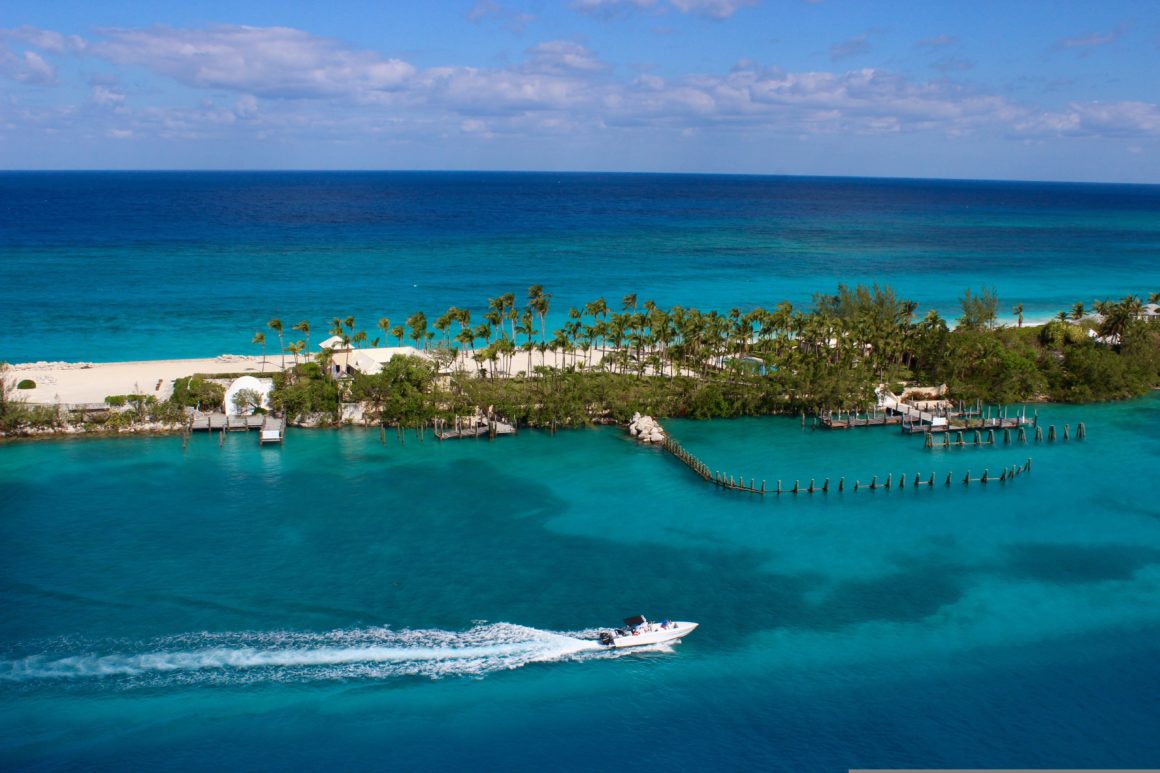
Summer (June to August): Warm seas and hurricane awareness
Summer in the Bahamas is hot, humid and all about warm-water living. Air temperatures often sit between 28–32°C (low-80s to high-80s°F), and the sea feels like a bath. It’s perfect if your priorities are swimming, snorkeling and long days at anchor. However, summer also coincides with the core of the Atlantic hurricane season, officially June to November, with the highest risk typically from August to October.
That doesn’t mean storms are constant. Many weeks pass with only blue skies and the occasional squall, but it does mean you need to plan differently. If you choose to sail in summer, consider shorter itineraries. Stick close to safe harbors and marinas with good shelter, and keep a close watch on forecasts from the National Hurricane Center. On the positive side, charter rates can be lower and anchorages quieter. You’ll experience a more “local” atmosphere once the winter crowds have gone.
Autumn (September to November): shoulder season and trade-offs
Autumn is a transitional time to sail the Bahamas. September and October still fall within the most active part of hurricane season, so conditions can be changeable and some marinas or charter bases may scale back operations. In return, you’ll find quieter anchorages and attractive deals on boats. By late November, the risk of major storms drops and many operators consider it the start of the main sailing season, making it a good moment to arrive before the peak winter crowds.
Why discover the Bahamas by boat?
However you time your trip, exploring the Bahamas by boat is arguably the best way to experience the islands. Distances between cays are short, so you can wake up in a secluded anchorage. Sail an easy couple of hours and drop the hook off a completely different beach for lunch. A sailboat or a catamaran gives you access to shallow sandbars, blue holes and reefs that are unreachable from the road. You can snorkel vibrant coral gardens straight from your swim platform. Drift over nurse sharks at Compass Cay or stop at sandbanks that appear and disappear with the tide.
One of the most iconic stops is Pig Beach in the Exumas, where the famous swimming pigs paddle out to greet visiting boats. A surreal sight you’ll remember long after you’ve rinsed the salt from your skin. Sailing also lets you move with the weather, chasing the best conditions and finding your own patch of turquoise silence far from the big resorts.
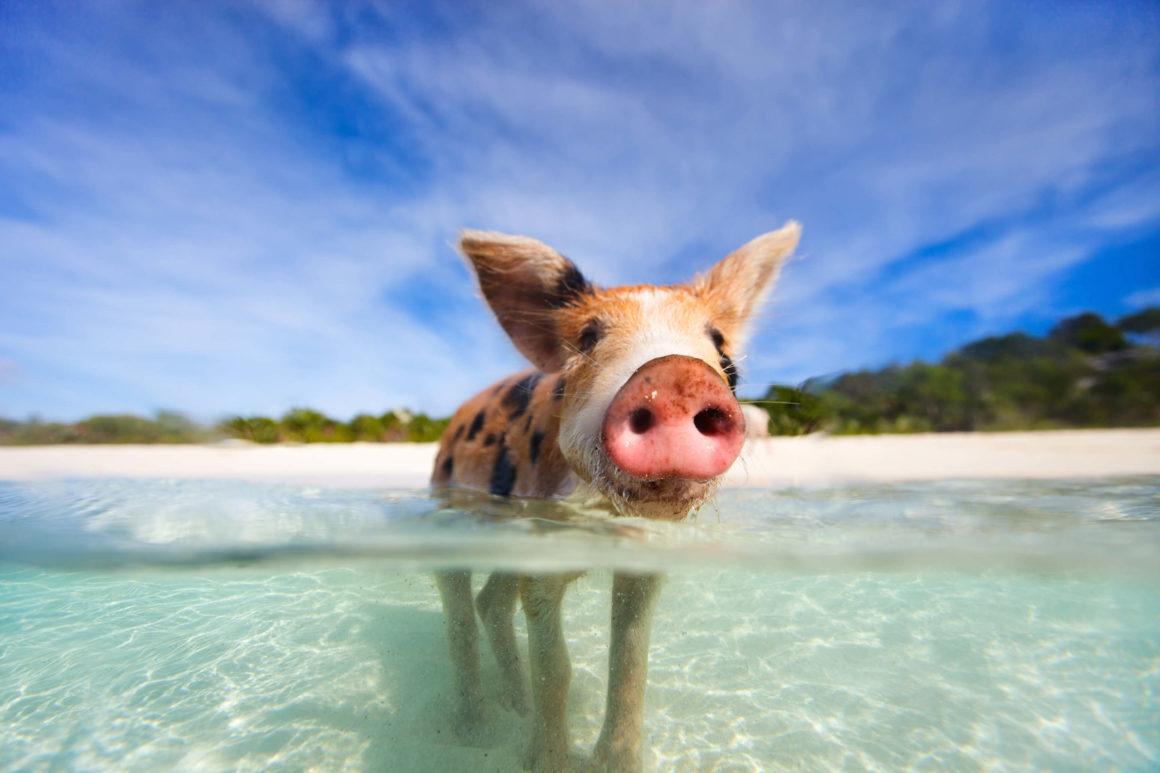
FAQ: When is the best time to go to the bahamas
You can sail year-around, but hurricane season (June-November, espacially August-October) brings higher weather risk and requires more flexibility.
December to April: stable trade winds, low rainfall and comfortable temperatures.
The Exumas and the Abacos are the most popular, with protected waters, short hops and good marinas.
In the dry season, expect steady 10-20 knot trade winds. In the wet season, winds are more variable with possible squalls.
Light clothes, reef-safe sunscreen, hat, polarized sunglasses, swimwear, water shoes and a light layer for cooler evenings.

